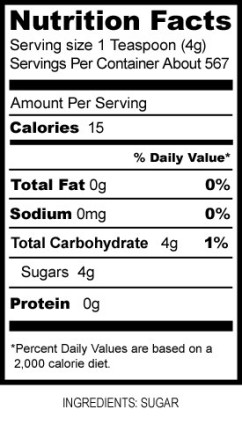During processing, sugar is added to food to enhance flavor, texture, shelf life or other properties.
Added sugar is usually a mixture of simple sugars such as glucose, fructose or sucrose. Other types, such as galactose, lactose and maltose, are less common.
Unfortunately, food manufacturers often hide the total amount of sugar by listing it under several different names on ingredients lists.
Glucose or Fructose — Does It Matter?
In short, yes. Glucose and fructose — even though they’re very common and often found together — have very different effects on the body.
Glucose can be metabolized by nearly every cell in the body, while fructose is metabolized almost entirely in the liver.
Studies have repeatedly demonstrated the harmful effects of high fructose consumption.
These include insulin resistance, metabolic syndrome, fatty liver, and type 2 diabetes.
Although eating any extra sugar should be avoided, it is especially important to minimize your intake of added sugars that are high in fructose.
Continue reading
